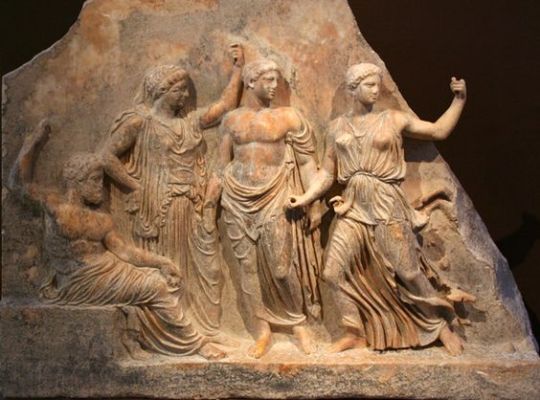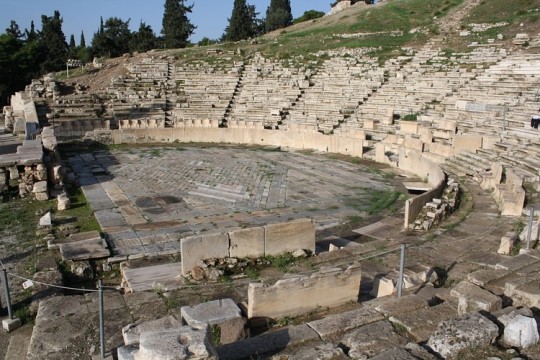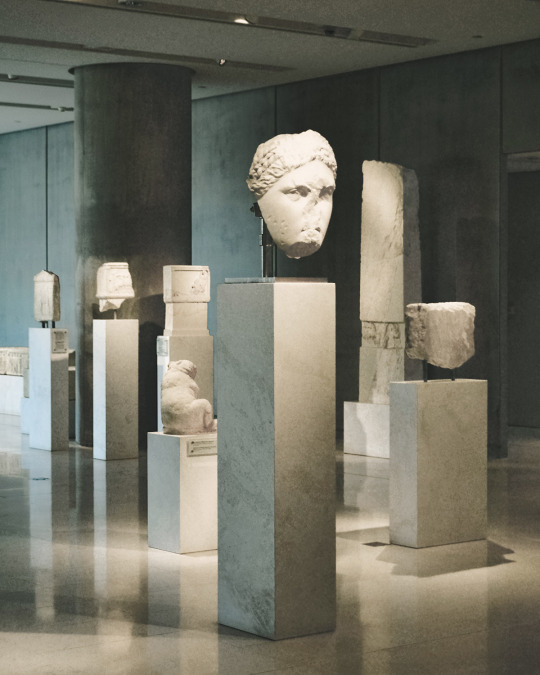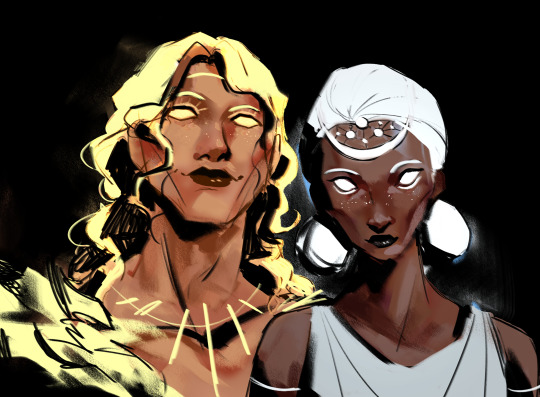Photo

Lat 19th Century photo of the entrance of Newgrange, a 5,200 year old passage tomb in Ireland, by R. J. Welch
3K notes
·
View notes
Text

Bronze statue of Athena (detail). 340-330 BC. Arch. Museum of Piraeus, Greece.
3K notes
·
View notes
Text
You do not need a sign.
For the love of the gods, just pray. You do not need to be called. You do not need to be contacted. Just pray.
2K notes
·
View notes
Text

Queenly Deo, the sender of splendid gifts 🌾
"To Demeter Eleusinia. O universal mother, Deo famed, august, the source of wealth, and various named: great nurse, all-bounteous, blessed and divine, who joyest in peace; to nourish corn is thine. Goddess of seed, of fruits abundant, fair, harvest and threshing are thy constant care. Lovely delightful queen, by all desired, who dwellest in Eleusis' holy vales retired. Nurse of all mortals, who benignant mind first ploughing oxen to the yoke confined; and gave to men what nature's wants require, with plenteous means of bliss, which all desire. In verdure flourishing, in glory bright, assessor of great Bromios (Dionysus) bearing light: rejoicing in the reapers' sickles, kind, whose nature lucid, earthly, pure, we find. Prolific, venerable, nurse divine, thy daughter loving, holy Kore. A car with Drakones yoked 'tis thine to guide, and, orgies singing, round thy throne to ride. Only-begotten, much-producing queen, all flowers are thine, and fruits of lovely green. Bright Goddess, come, with summer's rich increase swelling and pregnant, leading smiling peace; come with fair concord and imperial health, and join with these a needful store of wealth."
----- Orphic Hymn 40 to Demeter
🌾🌼🌾
(click on image for better quality)
36 notes
·
View notes
Text

PAN, a Patinated Bronze figure resting on a red and black marble column shaft. Signed and located A. Röhrich Roma, for Augusto Röhrich [1800-1899] in Rome. Italy, mid-19th century.
28 notes
·
View notes
Text

''Gold is his cloak, and the clasp also; gold the Lycian lyre and bow, and the quiver; gold also the sandals. Apollo is all gold and all wealth; we see this clearly through Pythô. God always beautiful, God always young; no down ever covered her tender cheeks. Her hair spreads the perfumed oil that she distills onto the ground; but the drops are not greasy; no, it is the panacea itself; there, in the city where the dew slides to the ground, there everything is salvation.''
Callimaque - Hymns
Rɪᴊᴋsᴍᴜsᴇᴜᴍ ᴠᴀɴ Oᴜᴅʜᴇᴅᴇɴ • Aᴘᴏʟʟᴏ (ᴡʜɪᴛᴇ ᴍᴀʀʙʟᴇ, Rᴏᴍᴀɴ (50-350 AD)
70 notes
·
View notes
Photo

Artemis
Relief showing Zeus, Apollo and Artemis; from Brauron, Greece; 400 BCE.
National Archaeological Museum, Athens (Greece)
259 notes
·
View notes
Text

Artemis
Head of Artemis, Roman copy of the Greek original of the 4th century BC, Ancient Rome, 1st century, marble, 51 cm
The State Hermitage Museum, Inv. ГР-5595
Artemis the goddess of the hunt, patroness of beasts, stern virgin and protectress of chastity - was also venerated as a deity of vegetation and fertility. As interpreted by the sculptors in the first half of the 4th century BC her image acquired softer features. It was that period (probably the circle of the sculptor Praxiteles) that produced the original that served as a prototype for the Roman copy in the Hermitage collection. The goddess is depicted as a very young maiden. Her exquisite head was tilted slightly and that movement adds Artemis's appearance an intimate, peculiarly Praxitelean charm. Her hair is drawn up and arranged in a plait around the head, which was a rare coiffure, but this kind of hairstyle gained much popularity with the circle of Praxiteles, since it allowed to accentuate the sophisticated beauty of the face. (Hermitage Museum)
55 notes
·
View notes
Photo

Marble votive relief from the sanctuary of Artemis at Brauron, Attica, showing a group of worshipers approaching the goddess (left), who is attended by a stag, one of her characteristic animals. Artist unknown; ca. 350 BCE. Now in the Archaeological Museum of Brauron.
328 notes
·
View notes
Photo

Theatre of Dionysos Eleuthereus
The theatre of Dionysos Eleuthereus on the south slope of the acropolis of Athens was first built in the 6th century BCE. Modified and expanded over the centuries, it is the oldest Greek theatre and is the site where some of the most famous Greek plays from antiquity were first performed.
Early Form
The theatre was part of a wider sanctuary dedicated to Dionysos Eleuthereus from the Archaic period. The cult to the Greek god of wine, merriment, and theatre was brought to Athens via the nearby deme of Eleutherai, although it can be traced back to Mycenaean times. A temple to Dionysos was first constructed by Peisistratos in the 6th century CE, and a circular area of tramped earth nearby was reserved for religious ceremonies where spectators took their seats on the hillside. Eventually this space evolved into a purpose-built theatre where Greek comedies and tragedies were performed, themselves evolved from earlier religious practices which included singing, wine drinking, animal sacrifices, and the wearing of masks. The climax of the celebrations was the Great Dionysia held each year in March/April, during the month of Elaphebolion, where the most famous playwrights such as Euripides, Sophocles, and Aristophanes presented their plays in competition.
Continue reading…
115 notes
·
View notes
Text

The Temple of Artemis at Brauron (now Attica)
108 notes
·
View notes
Photo

Head of a statue of Artemis Brauronia.
Artist: Praxiteles
Period: Classical Period, around 330 BC
Location: The Acropolis Museum
It was found in 1839 in the area of the Sanctuary of Artemis Brauronia. The head comes from a larger-than-life, statue which most probably depicted the goddess seated. Her hair is gathered at the sides in two long braids that cross each other on top of her head, while a third lies along her central parting. This was a hairstyle common among young children; and suitable for a goddess who associated with them.
150 notes
·
View notes
Text

Artemis.
(My Artemis in a post-modernist sense.)
551 notes
·
View notes
Photo


FANTASIA: The Pastoral Symphony (1940)
8K notes
·
View notes
Text
THE DIVINE TWINS

DIGITAL
I had time for a quick sketch so here you have the divine twins Apollon and Artemis!✨ And yes I love veiled Artemis don't come at me.
244 notes
·
View notes
Text

Ring with Ingot Bezel
Greek; Thessaly, Geometric Period (800–700 BCE)
This precious bronze object is a votive, or devotional gift, made as an offering to the gods. They come in many forms, such as animals, beads and brooches. Many seem once to have been attached to something else. Votives were hung from sacred trees or placed in sanctuaries around Greece. Once a shrine was full, the votives were ceremonially buried to make room for more offerings.
23 notes
·
View notes
